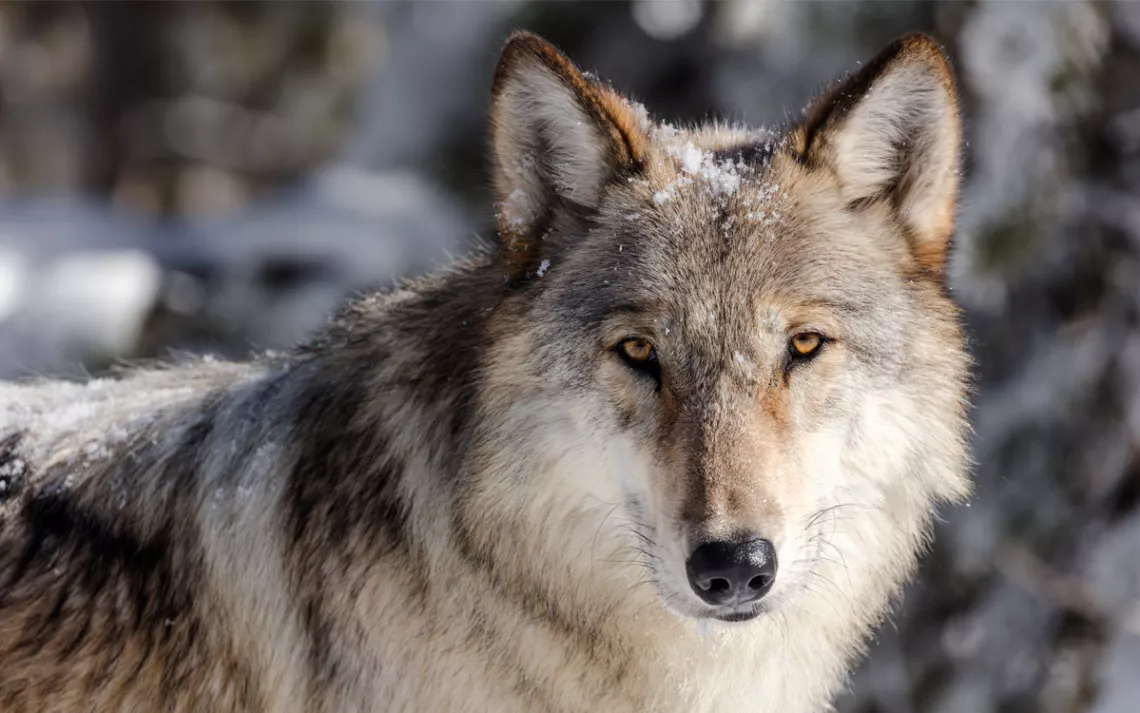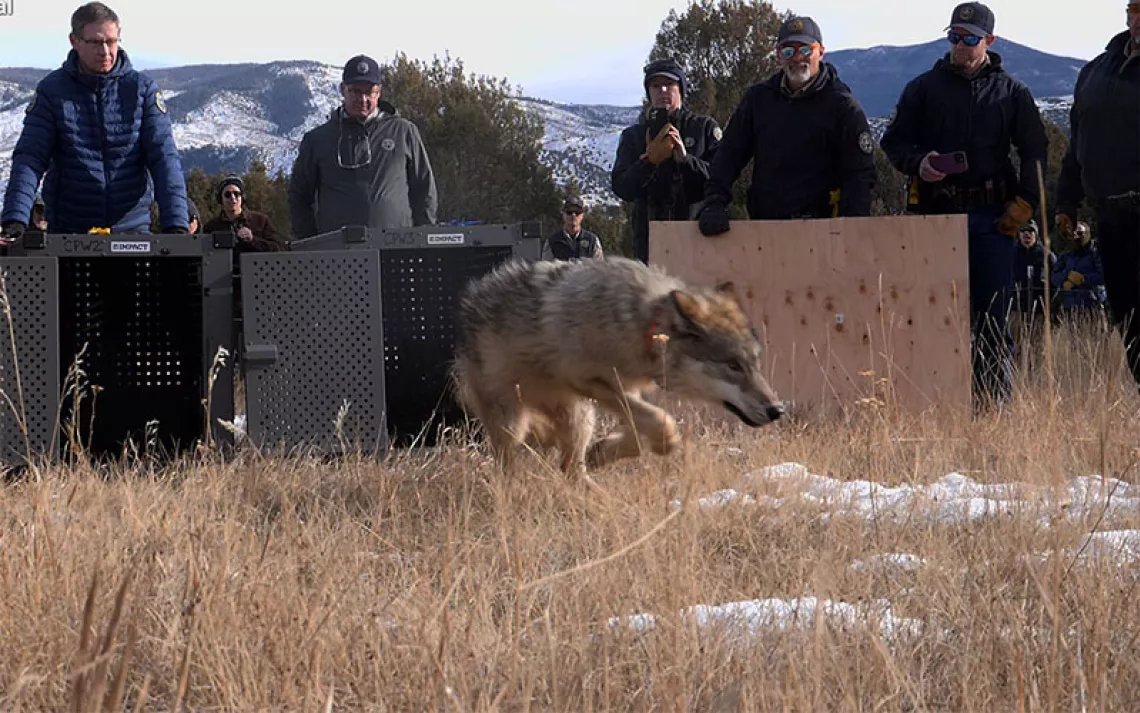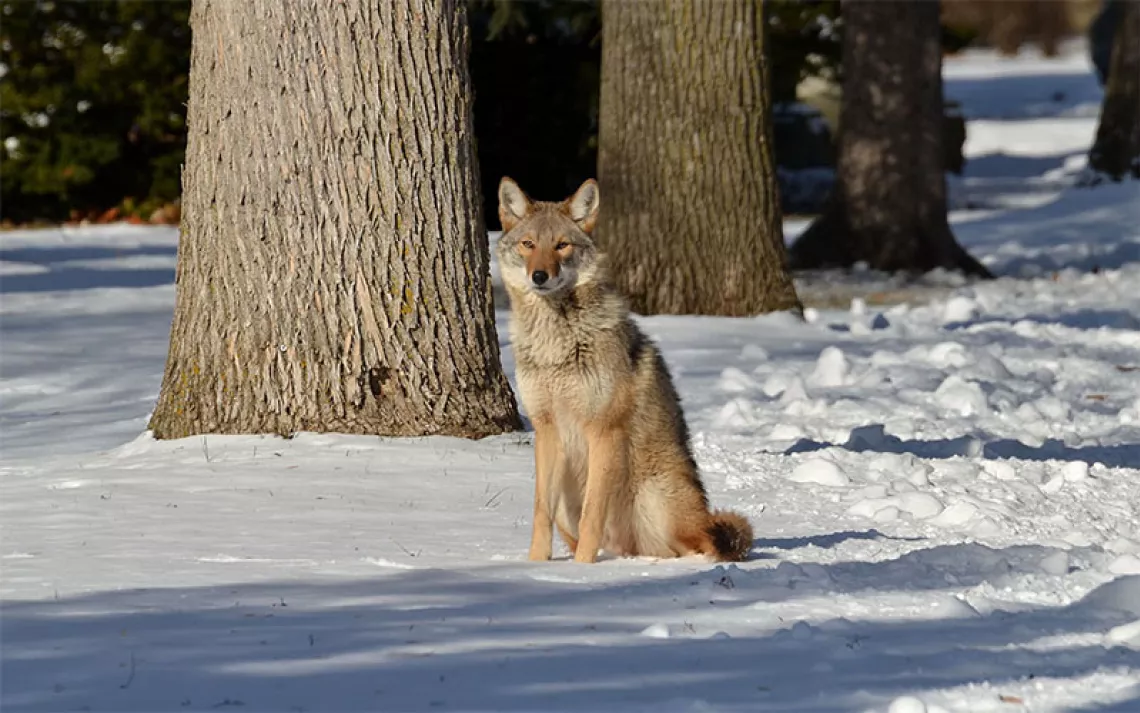Idaho Legislature Sets Sights on Wolf Extermination
New bill would allow for 90 percent of wolves in the state to be killed

Photo by Jacob W. Frank/National Park Service via AP
Update: On May 6, Idaho Governor Brad Little signed wolf-killing bill SB1211 into law. With its passage, private contractors and individuals with a single hunting tag are now able to kill an unlimited number of wolves in the state.
For the Idaho legislature, it seems, the only good wolf is a dead wolf.
In late April, the Idaho legislature passed a bill that would allow hunters to kill up to 90 percent of Idaho’s wolf population. The legislation is now awaiting Governor Brad Little’s signature. If it's signed into law, hunters and trappers will be able to kill as many wolves as they'd like, without restrictions.
The Idaho legislature’s savagery does not stop at doing away with hunting limits. The law would permit hunters to run down wolves with motorized vehicles and hunt in the dark using night-vision equipment (nearly all states restrict hunting to daylight hours). It would also extend the trapping season on private property to year-round, even during the breeding season, and allow hunters to trap or shoot as many animals as they want on a single tag. The law would also allow the state’s Wolf Predation Control Board to hire private contract killers to take out wolves, and it would increase the board’s annual budget from $110,000 to $300,000.
The proposal, which was fast-tracked through the state legislature in less than a week, represents the latest development in a chilling trend of Republican state lawmakers trying to eradicate wolves. From Wisconsin, where hunters pushed the state into allowing the slaughter of 20 percent of the population, to Montana, where trapping associations successfully lobbied lawmakers to bring back bounties, wolves face a level of persecution not seen since the turn of the 20th century.
Suzanne Stone, director at the International Wildlife Coexistence Network, says passage of Idaho’s SB 1211 could “absolutely” warrant federal officials reviewing whether it’s time to return wolves in the Rockies to the endangered species list. As a part of the federal rule that removed wolves in the northern Rocky Mountains from the endangered species list over a decade ago, Idaho agreed to maintain a population of at least 15 breeding pairs and 150 wolves. But this is a floor, not a ceiling. Idaho Fish and Games estimates there are currently about 1,500 wolves in the state. The race to kill most of those animals could and should trigger federal oversight, says Stone, who has worked in wolf conservation for over 30 years.
"It's like [lawmakers] don't have any fear that the federal government is going to step back in and take over management if they betray their agreement," Stone says. "There will definitely be people who pursue this not only from litigation but from new legislation as well."
According to the delisting agreement, there are four scenarios that could warrant wolves being returned to Endangered Species Act protection: if wolf populations drop below 10 breeding pairs or 100 individuals; if the population falls below 15 breeding pairs and 150 individuals for three consecutive years; if increased human pressures “significantly threaten” the wolf population; and last (specific to Wyoming wolf management), if the wolf population outside Yellowstone National Park falls below seven breeding pairs for three consecutive years. Stone says the new law would make it easy for Idaho to meet the first three of those criteria.
Violating the agreement with the federal government isn’t the only thing that could jeopardize the current state management of wolves. If the bill becomes law, Idaho could be in danger of violating its commitment to manage wolves as a game species, said Jonathan Oppenheimer, external relations director at the Idaho Conservation League, when he testified against the bill.
As a source population for wolves in other western states, Idaho's wolves are vital to the success of overall wolf recovery in the West. In fact, the most recent federal delisting for wolves outside of the northern Rocky Mountains relies on thriving populations there to justify removing federal protections in other regions such as the Great Lakes. If wolves in the Northern Rockies become scarce, that could undermine the argument for further delisting, Stone says.
"The federal delisting is already being litigated. So it's very possible that Idaho and Montana will now fall under that review because of major changes in the regulatory mechanisms that were in place to help guarantee that the wolf populations here would be stable," Stone told Sierra.
Even though the wolf-killing bill passed the legislature in a lopsided 58–11 vote, opposition to the proposal has come from many directions—including some surprising ones. Conservation groups including the Idaho Conservation League and the Idaho Sportsmen issued statements rebuking SB 1211 for its disregard of ethical hunting principles. Last week, almost 30 former state, federal, and tribal wildlife biologists sent a letter to the governor urging him to veto the bill over similar concerns. And during the Senate committee hearing, Senator Michelle Stennett, a Democrat from Ketchum, raised concerns over the law’s risk to state management and called out the lack of federal inclusion.
“I’m a little disturbed,” said Senator Stennett in her closing remarks. “US Fish and Wildlife wasn't consulted. . . . I understand those that are interested parties putting this together, but in the end, we do still have to work with the Feds in order to keep this agreement together.”
For his part, bill sponsor Senator Van Burtenshaw, a Republican from eastern Idaho, has been clear about the groups he’s hoping to please. “We had the sheep men, the cattlemen . . . we had [the] Farm Bureau, we had outfitters and guides, as well as trappers at the table,” said Burtenshaw. “They put together a piece of legislation that was sponsored by the industry and agreed upon by the industry. And that’s how this came about.”
Not coincidentally, these interest groups are extensions of the same constituencies that exterminated wolves in the United States a century ago. The rush to oblige them now means lawmakers prioritize killing and eradication over non-lethal measures.
Yet research tells us that not only are lethal measures ineffective but also that the fears they're based on are overblown. A 2019 report from the US Humane Society found that wolves account for less than 1 percent of cattle and sheep deaths in Idaho. “They have demonized the wolf to the point where they’re trying to legislate controlling the demon that is simply in their imagination,” Stone told Sierra.
Meanwhile, hunters argue that wolves are gorging on elk and deer, leaving them with fewer opportunities to hunt. Idaho Fish and Game employees, however, have referred to the recent spate of successful elk harvests as the “golden age of elk hunting.” Elk reports show that the state is meeting its harvest quotas in 16 of the 22 hunting zones, and the current population stands at approximately 120,000—just 5,000 animals below the all-time highest count.
For Andrea Zaccardi, senior attorney for the Center for Biological Diversity in Idaho, the Idaho legislation is a prime example of what happens to wolves when they lose federal protections. The state already has a very permissive hunting season that allows the killing of wolf puppies, allows year-round hunting in some areas, and permits a single person to kill up to 15 wolves, including via the use of chokehold snares.
"I think Idaho is setting the exact bad example that everyone has been afraid of in terms of what state management of wolves may look like,” Zaccadi told Sierra. “This is the first step in terms of Idaho just usurping authority from state management, making political decisions that are not scientifically based, and just goes to show the state is not responsible enough to manage wolves."
 The Magazine of The Sierra Club
The Magazine of The Sierra Club



